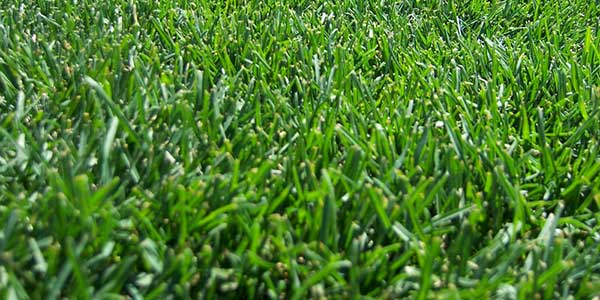NevadaCarson City,
NevadaCold Springs,
NevadaFallon,
NevadaFernley,
NevadaHazen,
NevadaHidden Valley,
NevadaIncline Village,
NevadaLockwood,
NevadaMason,
NevadaMinden,
NevadaMound House,
NevadaNixon,
NevadaPatrick,
NevadaReno,
NevadaSalt Wells,
NevadaSchurz,
NevadaSmith Valley,
NevadaSpanish Springs,
NevadaSparks,
NevadaSun Valley,
NevadaVerdi,
NevadaVirginia City,
NevadaVirginia City Highlands,
NevadaYerington, Nevada
Lawn Aeration: What It Is and Why You May Be Doing It Wrong
There’s a good chance you’ve seen commercials marketing lawn aeration products that actually give the entirely wrong idea about what aerating your lawn is all about. For the record, it is not advisable to walk around your lawn with golf spikes on and consider it aerated. Let’s take a look below the surface and get the dirt on aerating like a pro?
Watering Tips for a Healthier Lawn
A healthy, green lawn requires appropriate amounts of water, sunlight, air, and soil rich in nutrients. The challenge for anyone caring for a lawn is finding the right balance of these essential elements. Water can be the most difficult source to gauge. There are a few tips and tricks for watering your lawn that will deliver consistent, beautiful results.
The goal is to help produce dense grass with deep roots. Root depth is the key to a drought resistant lawn. Weather conditions can help you determine a watering schedule, but it is generally advisable to provide your lawn with about an inch of water per week. The time you choose to water also has a bearing on your lawn’s health. Early morning is the best time to water to ensure that moisture properly evaporates throughout the day. Watering at night can leave your grass to molder and develop fungal diseases.
When watering, you’ll also want to avoid overwatering or generating run-off that can pool in certain areas of the lawn, permanently damaging the grass there. Watering more heavily on mounds and along edges that butt up to driveways, pathways, or buildings is advisable because these areas tend to become more heated and dry out quicker.
Is Sod the Right Choice for Your Lawn?
There are several benefits to installing a beautiful sod lawn on your property. The most notable advantage is the instantaneous look of a rich, thick lawn. Sod lawns will be fully usable within 2-3 weeks of installation. Regular seeding can take much longer and requires significant maintenance in the meantime, in the form of regular weeding and watering.
Sod is the costlier option at the outset, but proper preparation and installation of a hardy lawn now can mean less maintenance work down the road. The important thing to remember when considering the choice between a sod lawn and a regular seed lawn is that both deserve diligent prep work to guarantee that you are giving your lawn the best chance at surviving and thriving.
Proper Measuring for Sod Installation
Making the decision to purchase and install sod can seem like a daunting task if you are working with complex landscaping. However, an accurate measurement can be made by following a simple formula.
First, you’ll want to sketch out the area to be filled with turf on a piece of paper. Be sure to include any features that infringe on the lawn area, such as pools, planters, or walkways. Break the total area up into sections and begin measuring the square footage of each section by multiplying the Length x Width. You will then measure all of the non-turfed features as well and subtract these from the total area measurement. It is a good idea to add on some extra square footage to account for waste in the process of cutting the sod to fit your space. We usually recommend adding 10% of the total square footage to your order. Through this process, you’ll be guaranteed just the right amount of sod and minimal headaches during installation.

Soil and Fertilizers
Soil types vary greatly depending on location and climate. Certain types, especially loamy soils, are best for growing lush, green lawns. Soils with a pH balance of 6.0 to 6.5 offer the best atmosphere for healthy lawn growth. The objective in nurturing your lawn with the right soil and fertilizers is to promote not only the outward foliage growth, but to establish a deep, healthy root system that will fortify your lawn.
When preparing to install sod, it’s important to know the state of the soil you’ll be working with. Generally, 4-6 inches of good, nutrient rich soil forms an essential base for grass to take root in. The use of loamy topsoils is often recommended, as is humus, which is comprised of decomposed organic matter. Fertilizers can also be mixed into the soil with a tiller prior to sod installation to maximize the health expectancy of the lawn.
When fertilizing an existing lawn, there are a few steps to take to guarantee proper fertilization. First, you’ll want to check for thatch, or a buildup of dead plant material, between the blades of grass, at the base of their growth. Thatch can also be removed by collecting your clippings with the mower while mowing the lawn. Thatch buildup, along with leaves and other debris on the lawn, can prevent the fertilizer from descending to the soil and thus to the roots of the grass. Watering the lawn after the application of fertilizer will help the fertilizer to descend and permeate the soil.
When selecting the right fertilizer for your lawn, be careful to consider the season and the type of grass. With the right choice, your lawn will show its appreciation by growing healthy, lush, and green.


